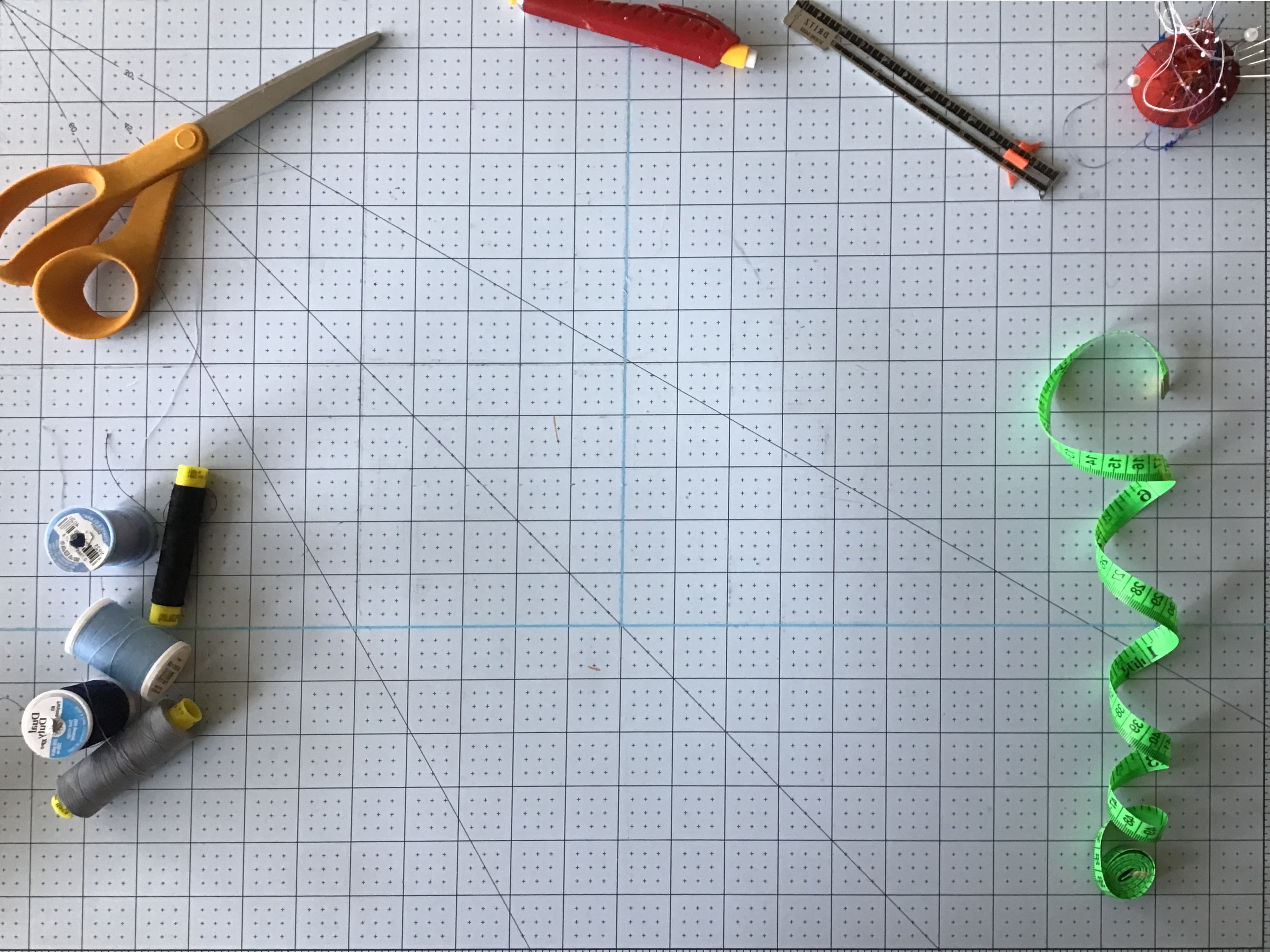Now let’s just cut out the pattern pieces we just finished and see what the sack starts to look like when it’s put together. Thankfully, the process of just assembling the pieces is pretty straightforward. It’s just symmetric back and front panels. Do the back center seam, the underarm darts, then the shoulder seams, and finally close the sides. Here is just the sack coat body as it sits on my dummy. I think it’s really starting to look like something here.
While this shows how the drafted pieces fit and drape, it’s not actually finished by any stretch. To finish it, to make a real, wearable piece, we need to figure out how to cut and attach the facing and lining.
Drafting the Facing and Lining
Not every jacket needs a lining, of course, but if we want to add one then we’re going to want to figure out how to take the pattern pieces we’ve drafted and produce facing and lining pieces from them. We’ll want the facing piece either way, so it’s best that we look at it now anyway.
To draw the facing, we’ll start by tracing out our finished layout pattern. For the front facing, select a point 1-1/2″ to 2-1/2″ from the neckline on the shoulder seam. Now another point 4″ to 5″ from the center front chest and another the same distance from the bottom. Connect these lines using a smooth curve. The back facing has the same width that we selected for the front shoulder seam all the way around.
For the lining, if we’re including one, we start with the remaining parts of the front and back panels after the facing is finished.


We’ll need to add a little extra material at the armscye and center back. Come up and out by 1/4″ from the corners and retrace the armscye. Add an extra inch to the center back seam, this will allow us to add a pleat to the center back so that the lining has enough give to move without upsetting the drape of the coat.
For the sleeve lining, we need to extend the sleeve cap by the same amount that we increased the armscye, 1/4″ in this case, and extend the hemline by 1/2″ to 3/4″ so that there won’t be any tendency for the lining to pull on the sleeve when we move our arms.
Now is a good time to mention that we don’t necessarily need to fully line the jacket. We don’t need to line it at all, really, we could just attach the facing and be done with it. For an unlined jacket we’d still want to cut facing, though. Putting those together, we can guess at how things should be cut in the final product.



The dotted line around the back waist is for half-lined and quarter lined jackets. For a quarter lined jacked we’d just leave off the front lining panel entirely and use the half-lined back. Obviously, again, we could leave the jacket unlined and only attach the facing. Usually facing is the same material as the coat, but plenty of stylistic options for coats and collars exist as well.
For the sleeves, things are similar. Easier, if anything, since we don’t need to worry about facing pieces. Hard to tell the difference just looking at it, but it’s there and the extra space will help.


Sleeves are rarely partially lined, so there’s no need to worry about alternative options here. Even otherwise unlined jackets often still have sleeve lining simply because of the higher stress we tend to put on sleeves and the need for easy movement for the wearer’s arms.
For a casual jacket we’d likely not bother with lining. We’d probably add a cuff, a piece of facing material with the same shape as the sleeve bottom that is at least 2″ long. For a very casual jacket we’d just hem the sleeve and call it a day.
Attaching the Facing and Lining
The collar and lapel facing was stitched together and then attached to the sack coat shell. It looks all right, for the most part. I’m not thrilled with the lapel shape, especially where it meets the collar, but that was very thrown together. Regal has a whole section on collars later in the book that we can reference for other projects.




I cut lining out of some old pajamas and lined half the sack coat muslin, so that I could compare the various lining options side-by-side. The lining gets stitched to the bodice facing before attaching the sleeves.



The sleeve and sleeve lining were each put together and then attached at the cuff, folded over and pressed. The finished and lined sleeve was then attached to the sack coat and the lining whip-stitched to the bodice lining or, in the case of the unlined side, felled down.
Conclusion
That’s pretty much where I got bored with this project. I’ve got an idea of how to read Regal’s writing and how to translate the text into a drafted pattern. When more interesting projects come along, that knowledge will allow me to use his book as a resource for them.
Hopefully, by following along, you’ve gained something, too.








